Is Brunei Worth Visiting? My Experience in the Sultanate
I went to Brunei because everybody said it was boring.
I’m aware that’s a weird reason to go somewhere, but I’m all about being different. If somebody insists a place isn’t worth visiting, I immediately add it to the top of my list and set off in search of its redeeming features.
When I first considered checking out Brunei, I struggled to find many positive write-ups about the sultanate. Everyone declared the country dull. Articles explained it was only worth visiting for a day and that you should only go if you’re into counting countries.
I subsequently gave myself four days to explore — more than most visitors even consider allocating. I was determined to dig deep and discover worthwhile activities in the country. I like to believe that every place is worth visiting, and I wanted to find what it was that made Brunei special.
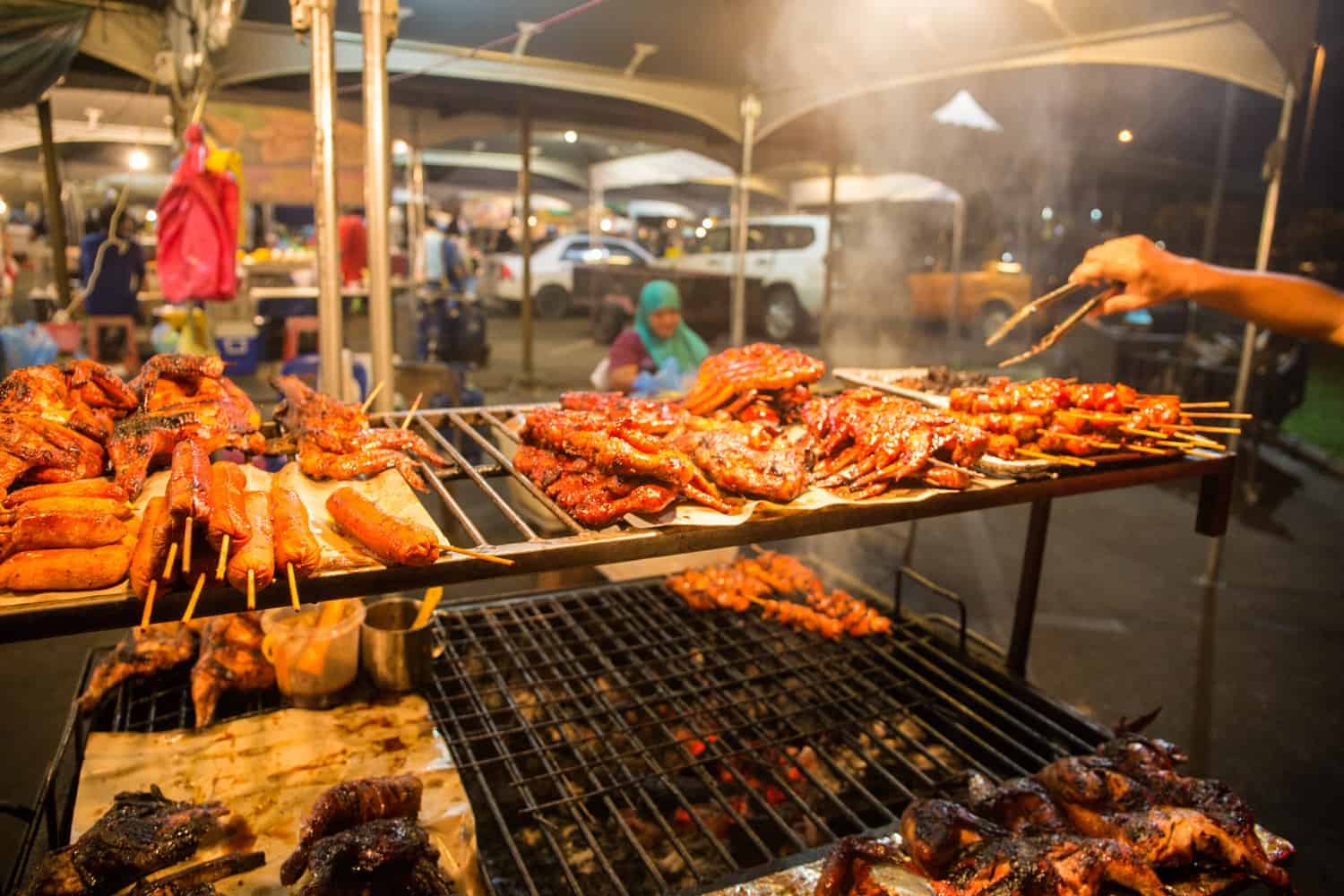
My first impressions were excellent.
We had chosen to stay at Taman Mawar Guesthouse ($30 a night) because it was the highest-rated guesthouse in the city. Previous guests raved about the owner, Maya, writing about how she’d shown them the country — driving them to the sights, taking them out to dinner, and doing everything she could to make their trip wonderful. It turned out she was just as lovely as I’d hoped.
She met us from the airport in the capital, Bandar Seri Begawan, and asked what we loved to do most when we travel.
“Eat!” Dave and I chorused.
“Excellent,” she said with a smile. “I have the perfect place for you.”
Gadong Night Market was the exact opposite to what I pictured when I imagined eating in Brunei, and I loved that Maya had spontaneously chosen to take us there.
Before arriving, my uninformed brain assumed that dining in Brunei meant perching atop solid gold thrones, sampling diamond-infused noodles while a dark plume of petrol gently wafted past my emerald-encrusted table.
A bustling night market, Gadong was filled with both locals and smoke, as vendors barbecued meat and vegetables on skewers, and customers snacked on the offerings. Stalls offered a variety of fruit juices, from orange to rambutan; mango to durian. It was possible to eat here for as little as 1 BND ($0.80). For a country that has a reputation for being over-the-top ostentatious and expensive for visitors, it was fascinating to see a side of it that was the exact opposite.
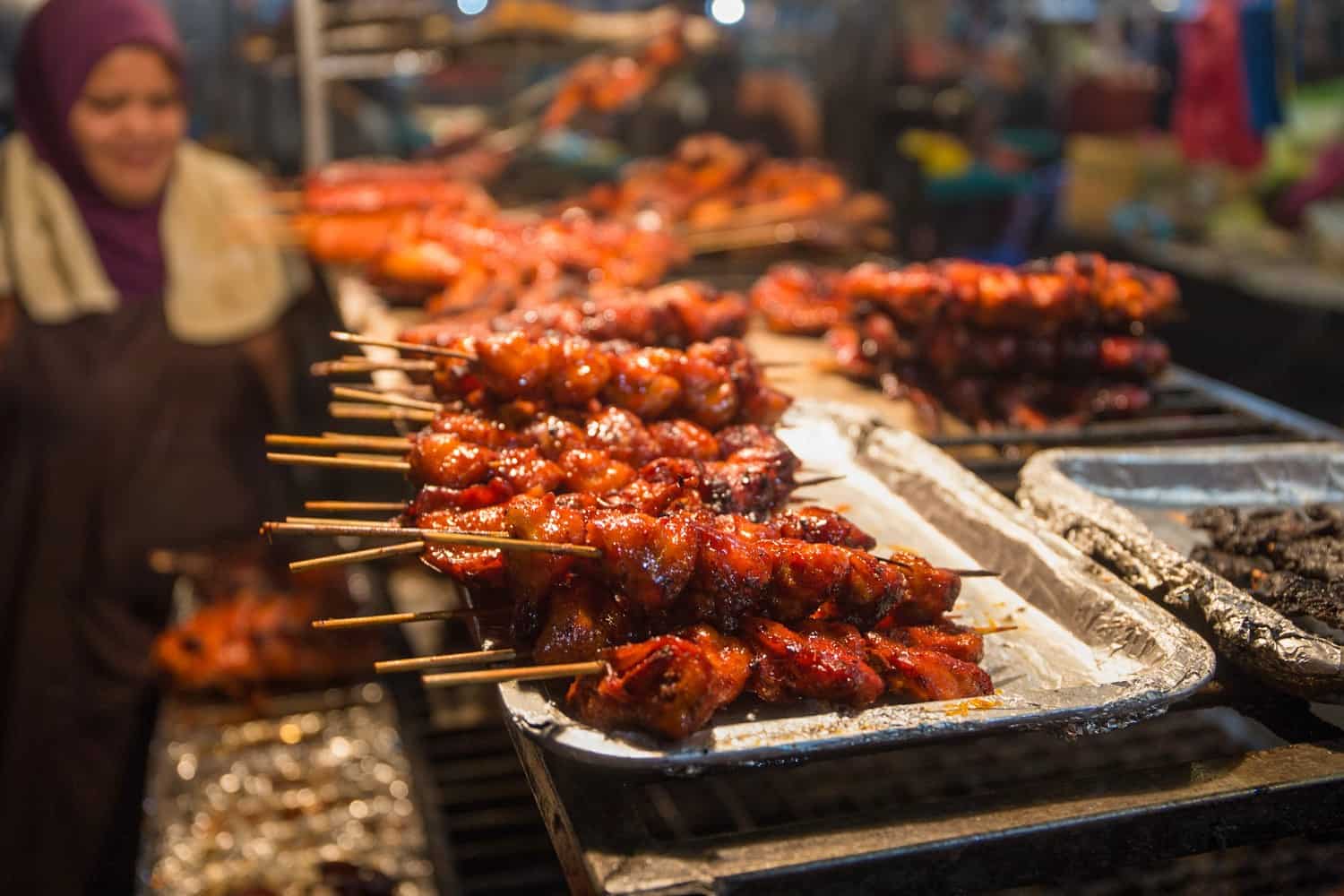
“Do you want to try something very local?” Maya asked us.
“Always,” I said.
“Well,” she began to laugh. “It’s something that even I don’t eat. I don’t know if you’ll like it. My guests often do not like it.”
“What is it?”
She laughed again, then whispered, “Chicken butt.”
I joined in with her giggles. “Yes,” I told her. “I totally want to try that.”
After all, chicken is chicken is chicken, right? And I always support the decision to use every part of an animal in recipes.
So, how was chicken anus?
It was, um, tubular. It was chicken nugget sized, but there was also this tough, chewy tube in the centre. It wasn’t bad! I 100% know that I am not in any way selling this to anyone, but if you get the chance to sample it at any point, it’s worth having a quick nibble.
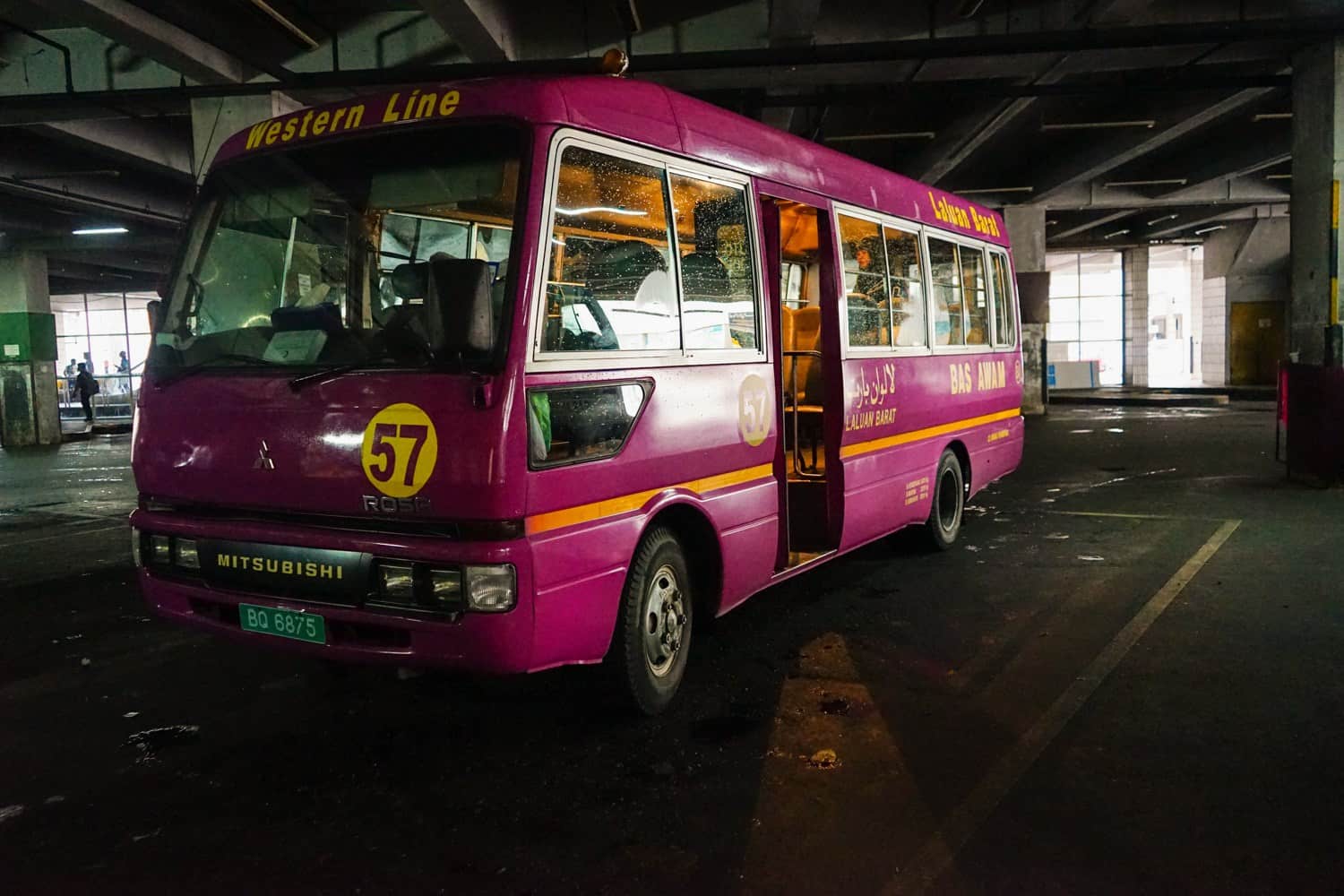
After a wonderful start to our time in Brunei, Dave and I set off the following morning surrounded by bright blue skies. I was thrilled.
A significant number of the photos I had seen of Omar Ali Saifuddien Mosque — the most famous building in the country — depicted it sheltering beneath grey clouds, so I suspected that like many equatorial countries, having a perfect sky was a rarity. Being able to take photos of it on a sunshine-filled day felt like a privilege, and I was practically jogging to get there.
I’ve never been able to warm to any religion, despite my parents sending me to Sunday School every weekend for years of my childhood, but I have a soft spot for mosques.
And this particular mosque was glam.
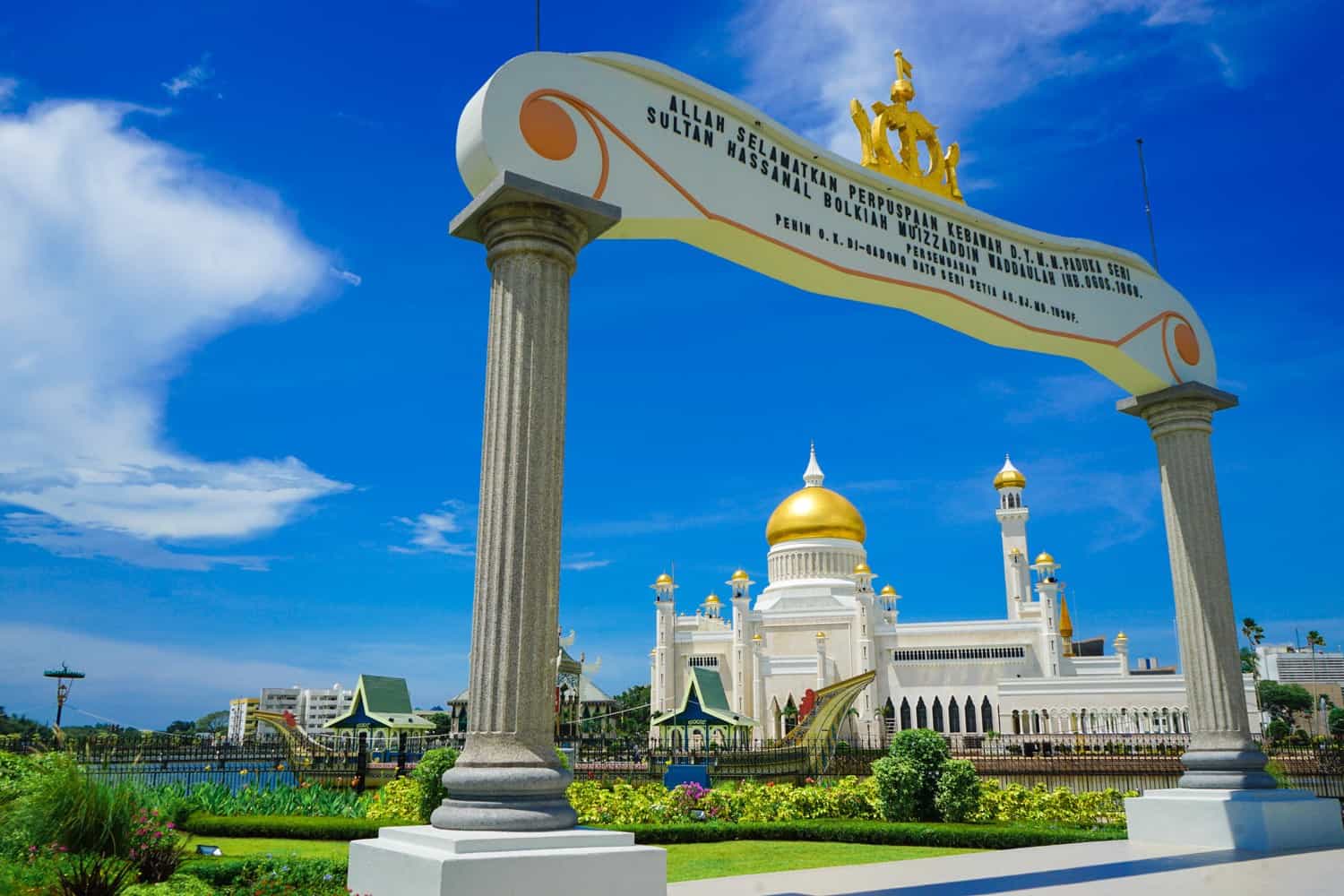
Omar Ali Saifuddien Mosque was built in the 1950s and was named after the 28th sultan of Brunei.
Interestingly, the materials used to build the mosque were sourced from countries around the world: the granite from China, the marble from Italy, the carpets from Saudi Arabia, the timber from the Philippines, and the chandeliers from the U.K. Topping it all off are the sparkling domes that are blanketed in gold leaf.
The mosque is the tallest building in the country, at a not-so-towering height of 53 metres, which gives some indication as to how built-up this capital city is. Answer: not at all.
At one point, the Bank of Brunei built their headquarters higher than the mosque — it didn’t last long, though, as the sultan ordered the top floor of the building to be removed.
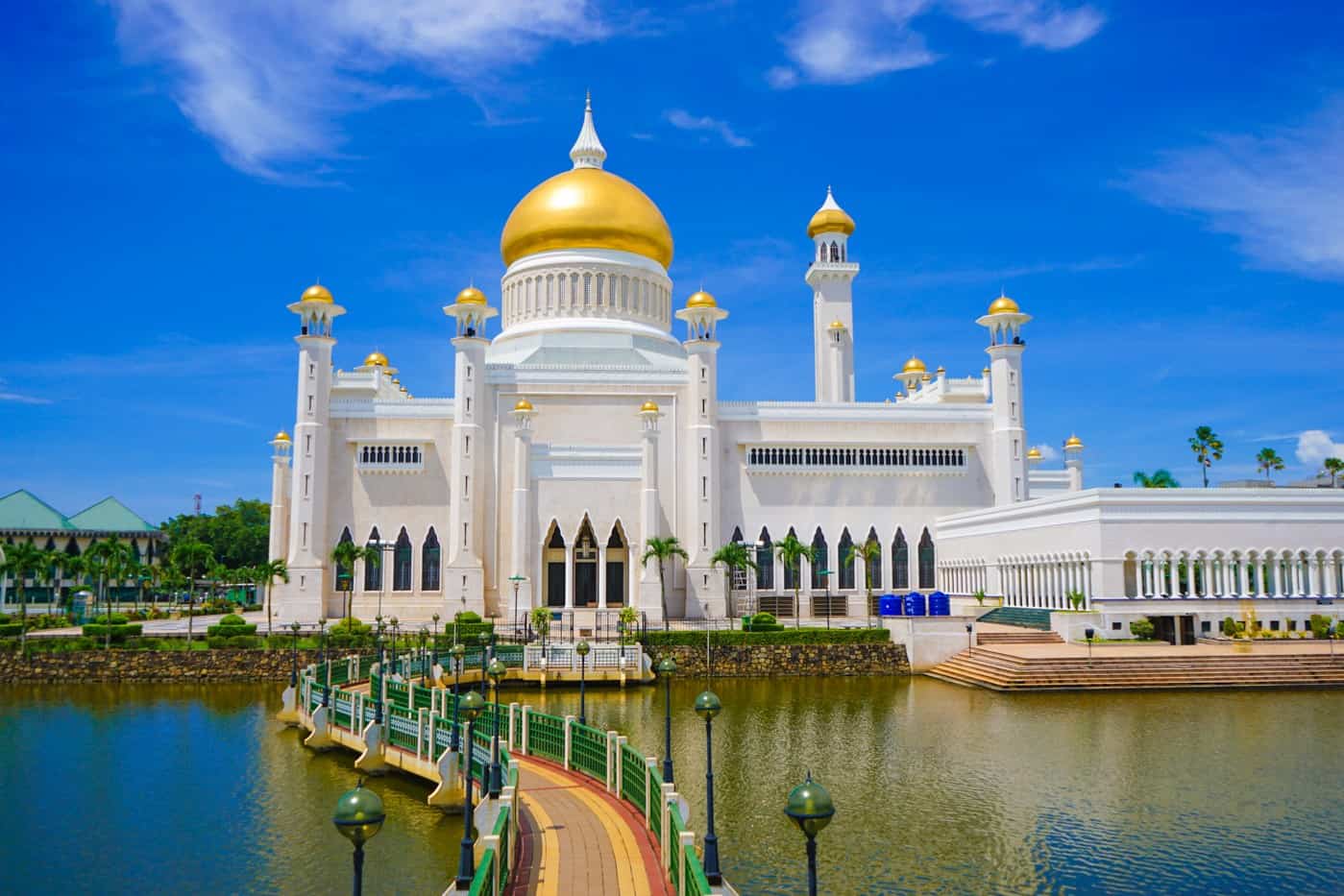
As an appreciator of all things mosque-y, I consider the Omar Ali Saifuddien to be right up there among the most beautiful. In my opinion it doesn’t quite top the Sheik Zayed Mosque in Abu Dhabi, but it was special nonetheless.
One of the biggest surprises from my time in Brunei was just how few tourists there were. We had this gorgeous mosque all to ourselves for half an hour — if you were to place a building this beautiful in many other countries around the world, you’d be jostling for space with a camera-wielding crowd.
I snapped my dream photos with the blue, cloudless sky and was already convinced that Brunei was worth visiting.
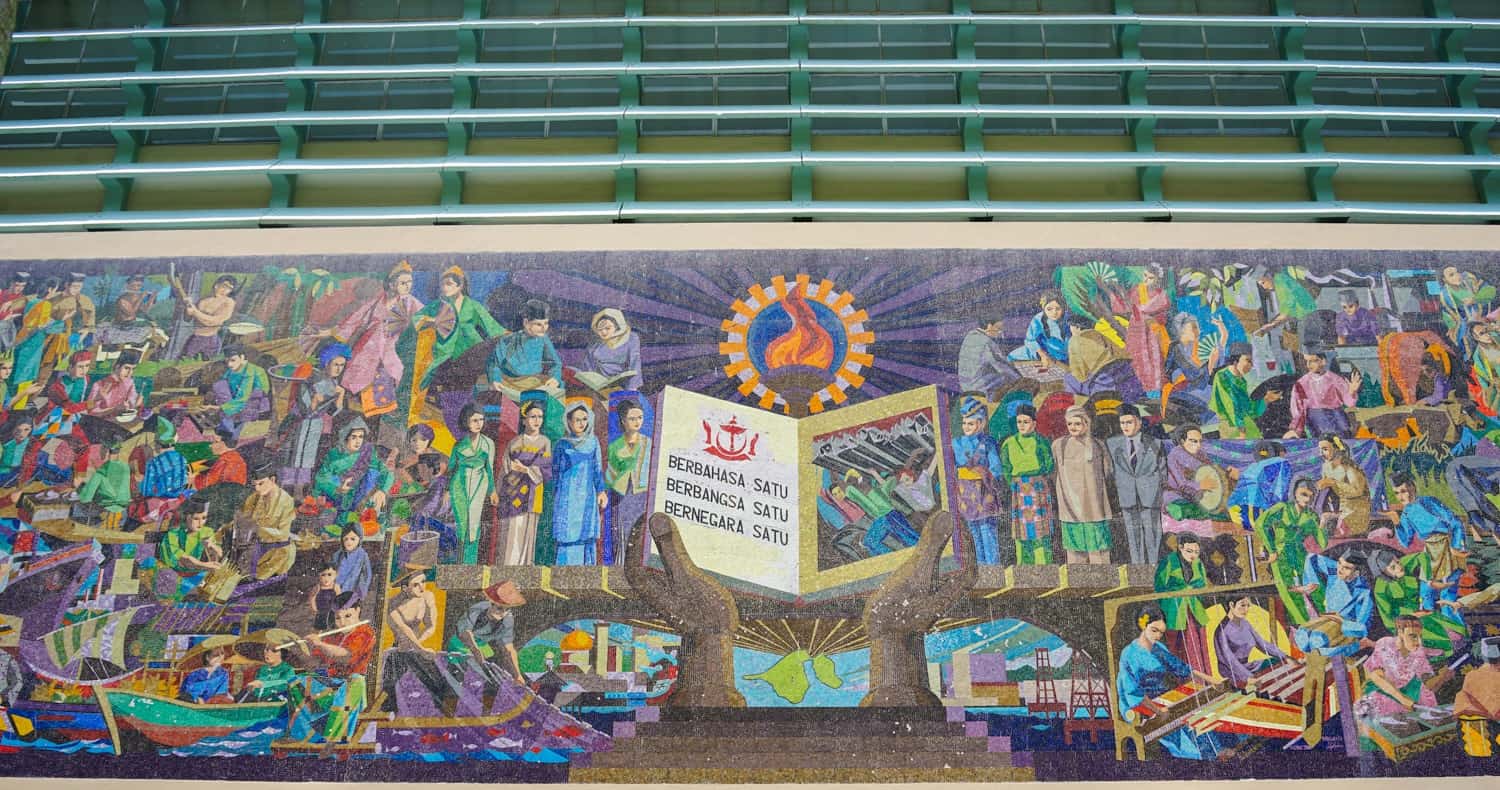
A mural in Bandar Seri Begawan, depicting life in Brunei in the 1960s.
As we searched the streets for somewhere to have lunch, I was struck by how safe the city felt, and how quiet it was for a capital.
Thanks to its vast reserves of oil and gas, Brunei is one of the richest countries in the world, with one of the highest GDPs. You probably already know the sultan is the richest monarch in the world, and he flaunts this wealth shamelessly.
Fun fact: My mum used to work in a bank in her twenties, and one of her tasks was to look after the Sultan of Brunei’s bank account in the U.K. He once invited her to lunch while he was visiting London, but she was too nervous to attend and pretended to be unwell! Like mother, like daughter.
In some respects, the sultan does a hell of a lot of good for Brunei. The country doesn’t have personal income tax, sales tax, or VAT, and citizens receive free education, healthcare and pensions, along with access to social housing and cheap loans. I didn’t see a single homeless person in Bandar Seri Begawan, and crime rates are very low. Everyone I ran into spoke impeccable English.
Dig a little deeper, though, and you’ll discover life in the sultanate isn’t quite the definition of perfect.
In 2014, the sultan announced he was going to be introducing Sharia law, which is never a good thing, in my opinion. Four years later, it has yet to be fully implemented. Regardless of that, Brunei is a strict Islamic country with several inhumane laws. Most notably, LGBTQ+ rights are non-existent, with same-sex relationships punishable by up to 10 years in prison. Under Sharia law, it could be punishable by death by stoning. While Sharia law will technically only apply to Muslims in Brunei, that’s still a whopping 65% of the population. If you’re not straight and cisgender, life in the country has got to be tough.
Freedom of speech doesn’t really exist in Brunei, either. They have an unelected ruler that can never be removed, and lèse-majesté laws means that saying anything negative about the sultan is a crime. You could be jailed indefinitely for doing so. Can I even safely return to Brunei after writing the previous few sentences?
Ten per-cent of residents in Brunei are Chinese, and it’s almost impossible for them to gain citizenship, which makes them ineligible for many of the benefits that come from living there. Over 90% of them are stateless.
On the inoffensive-but-interesting scale, everything in Brunei shuts down every Friday between 12 and 2 p.m. to allow residents to pray, every building in the country has to be within listening distance of a mosque, and public displays of Christmas have been banned within the country. The sale of alcohol is also banned within the country, but non-Muslim visitors can import a reasonable amount if they wish.
It’s a travel writing cliche, but Brunei is a country of contrasts.
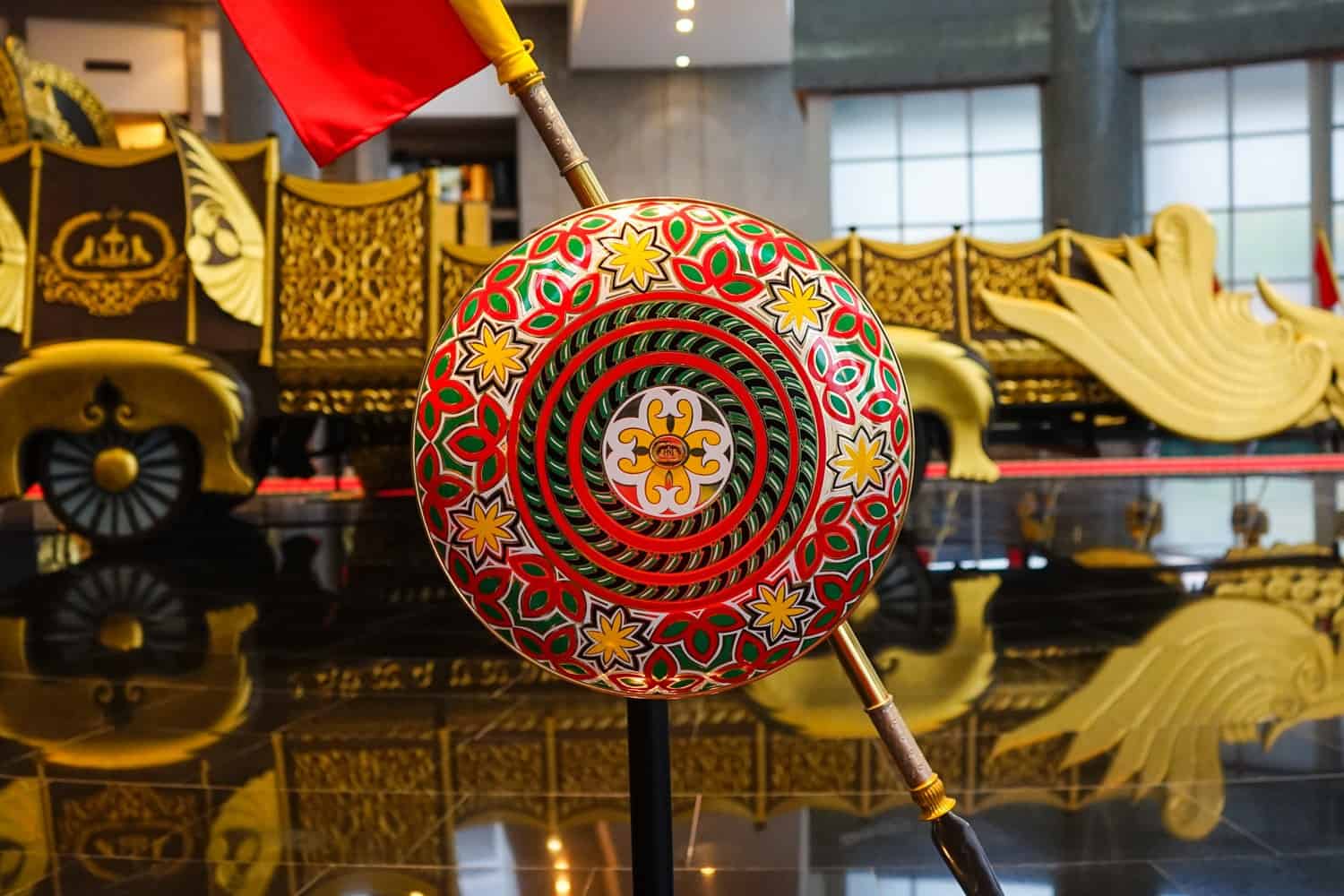
Our next stop of the day was the Royal Regalia Museum, which was free to enter. This bizarre place is home to a vast number of extravagant gifts that the sultan has received from heads of state from around the world. You couldn’t take photos inside the the museum, unfortunately, so we took a couple of snaps of the golden chariot in the entrance, then wandered in.
The museum covers the life of the sultan, from his birth to his coronation to the present day, then branches off into the collection of gifts he’s received over the years. It was interesting to see which countries had gifted him the most lavish presents, and which had presented him with things that looked, um, a little bit rubbish in comparison.
We spent two hours inside the museum and left feeling as though we had a better understanding of the sultan, so I’d recommend heading there if you find yourself in Brunei.
Not wanting to run out of things to see on our very first day (which is perhaps your first indication of how much the city has to offer), we decided to head back to our guesthouse.
In a country where oil and gas money subsidise the cost of petrol, Brunei is a country where almost everybody drives — it’s common for households to have as many as four cars. As we didn’t have our own transport, we opted to do as the few carless locals do and take the bus back to our guesthouse. It was inexpensive at 1 BND ($0.80) for a 15-minute ride.
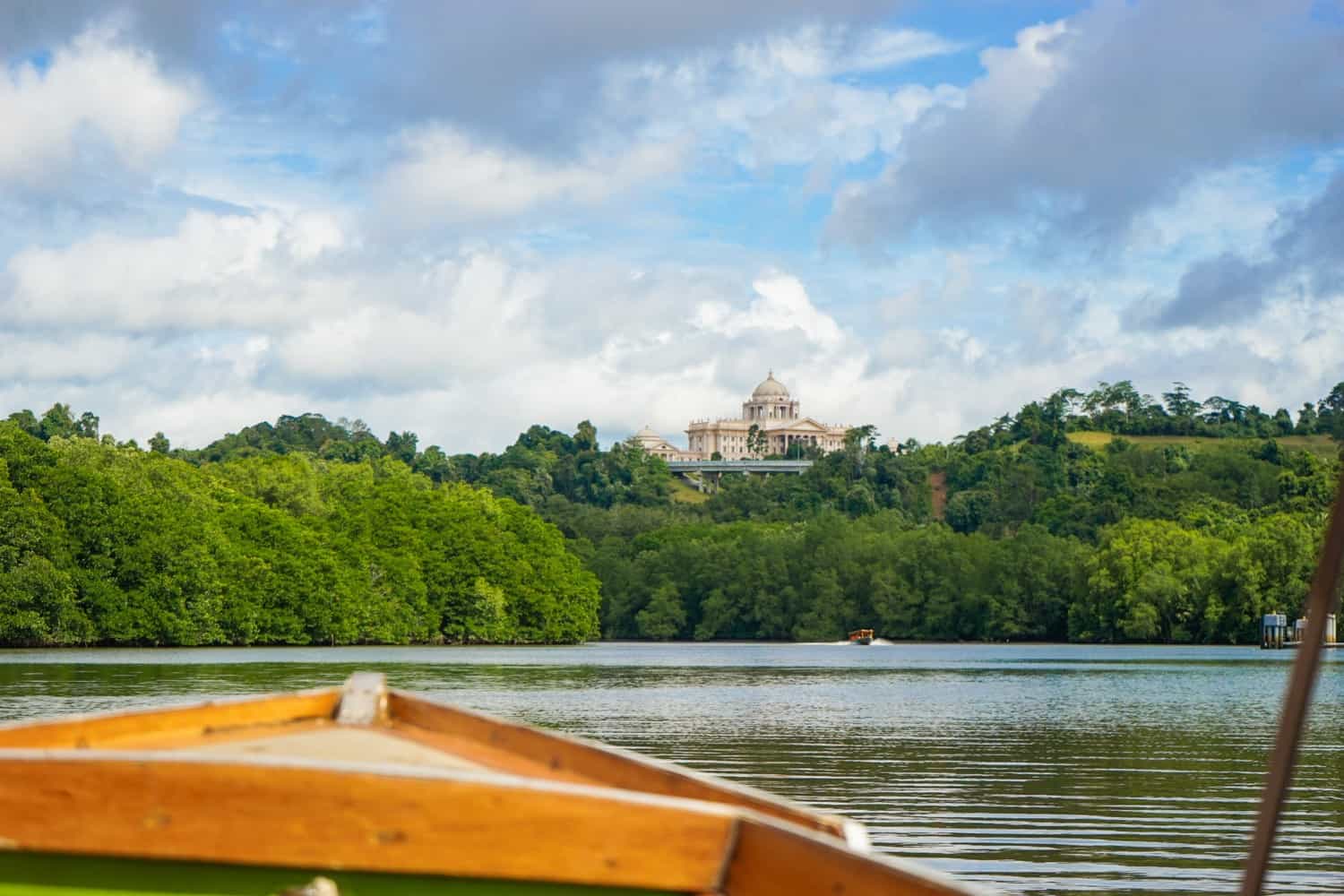
The following morning, I had one activity in mind: to head out on the water.
Bandar Seri Begawan is home to a population of proboscis monkeys, which are only found on the island of Borneo. I’ve always wanted to hang out with these unusual-looking animals, so when I found out you could hire a boat to take you to see them, I was up early and walking into town.
I mentioned above that practically everybody in Brunei drives, due to the low cost of petrol, and that driving is seen as the only way to get around. We rarely saw anybody walking into the city, and I soon learned why when Dave and I attempted the hour-long trek into the centre of Bandar Seri Begawan.
Within two minutes of setting out, a car pulled over and a smiling middle-aged woman waved us over.
“Get in! Get in!”
We piled inside, thanking her profusely.
“Welcome to Brunei!” she said. “Where are you going? Where can I take you?”
Dave and I communicated with each other using our eyes to try and work out if we were in a taxi. I’d read that Brunei has less than 50 across the country and that it’s super-rare to see any driving around. After all, there isn’t much point in operating as a taxi when most of the locals drive themselves.
When she dropped us off at the waterfront, we offered her money for petrol and she laughed, eventually accepting a few Bruneian dollars for the ride. That experience coupled with the wonderful hospitality we’d been shown by Maya had me bowled over by the kindness of the locals.
Of course, given that I’m bisexual, it also had me wondering if people would have been quite so welcoming if I hadn’t been travelling in the country with my boyfriend.
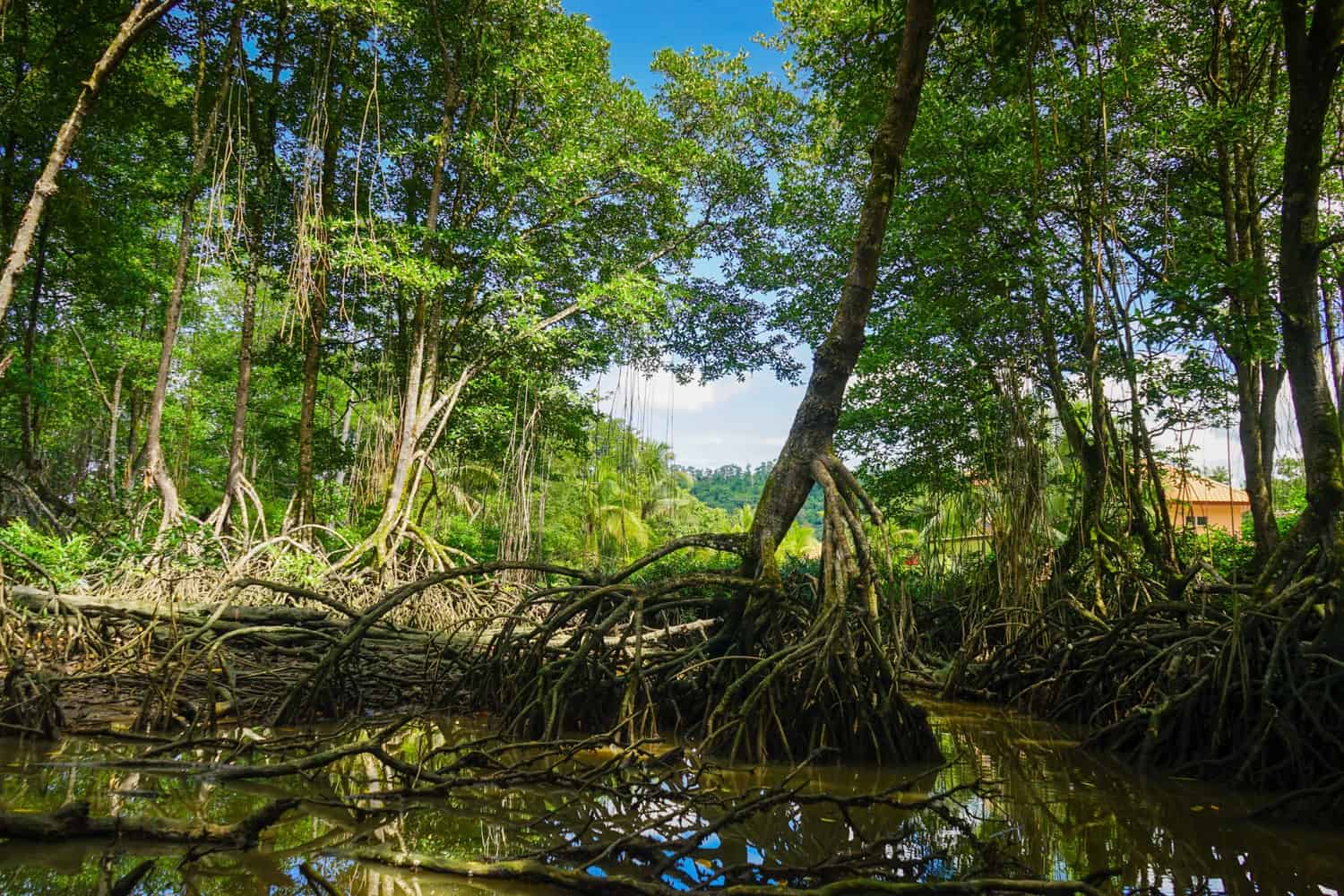
We approached a local guy on the jetty and asked how much it would cost to spend a couple of hours on the water. We wanted to catch a sighting of the proboscis monkeys, but also take a look at Kampong Ayer: a series of floating villages where three per-cent of Bruneians live their lives. After negotiating the price down to 30 BND ($29), we clambered into his boat and put on our life jackets.
Minutes later, we were racing towards the mangroves, the wind causing my eyes to water. I wasn’t holding out much hope for a monkey-sighting, as I knew we were roughly two hours past prime observation time, but smiled anyway. I love jungles, and spending time in them was precisely why we had chosen to travel to Borneo.
After half an hour of high-speed boating, during which we paused for a few moments to take in the view of the largest residential palace in the world (#Brunei), we spotted a small clearing through the mangroves, and manoeuvred our way between the roots.
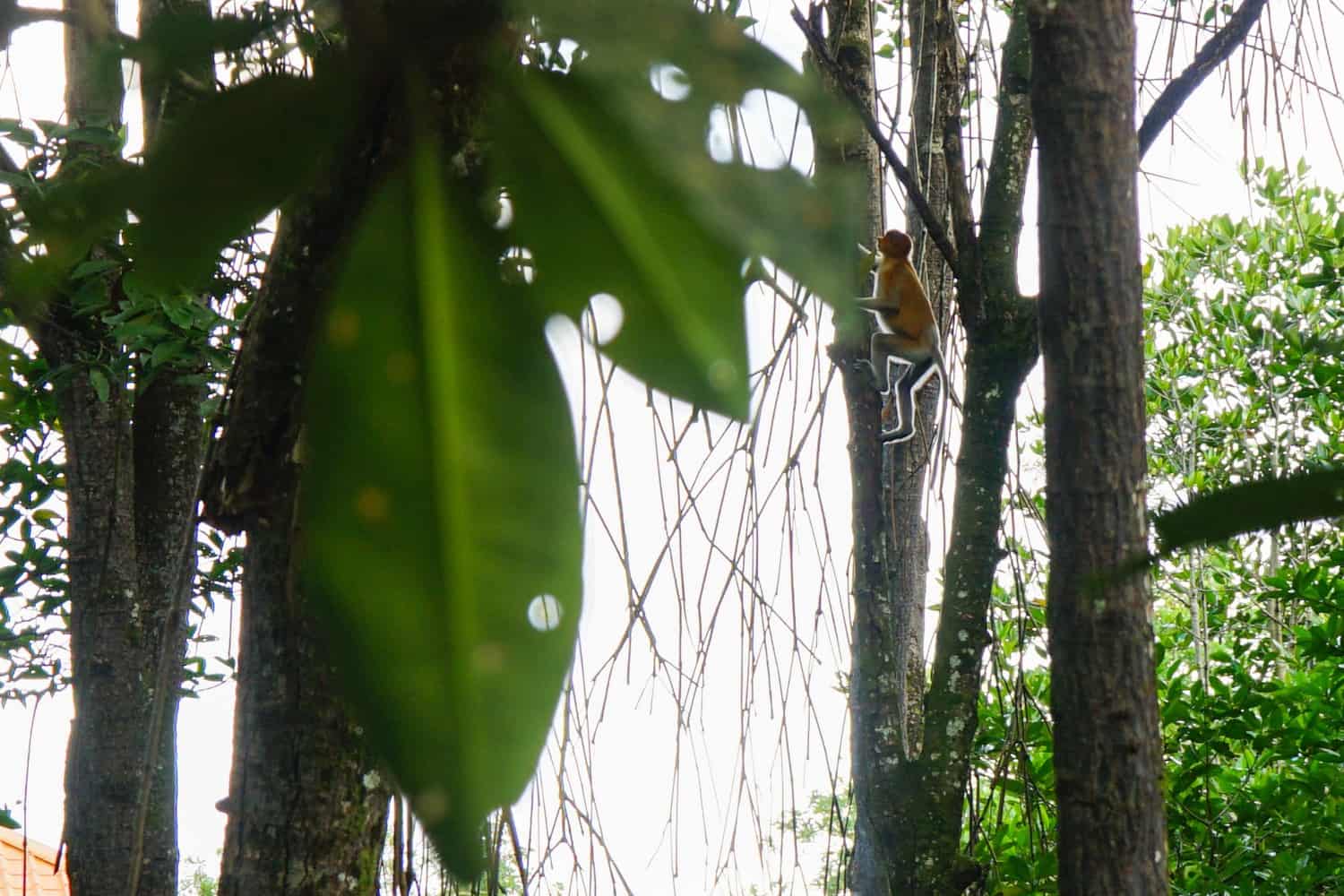
Within minutes: movement!
I couldn’t believe it.
Ahead of us, a silhouette of a proboscis monkey made its way up a distant tree trunk and caused my jaw to drop.
These days, I prefer to spend my time in the moment rather than witnessing magic from behind a camera screen. It’s a fairly poor decision to have made as a travel blogger, I’ll admit, to often have only a couple of photos to choose between rather than hundreds, but it’s one I’ve made peace with. I spent ten minutes watching the proboscis monkeys scrambling through the trees before reaching for my camera.
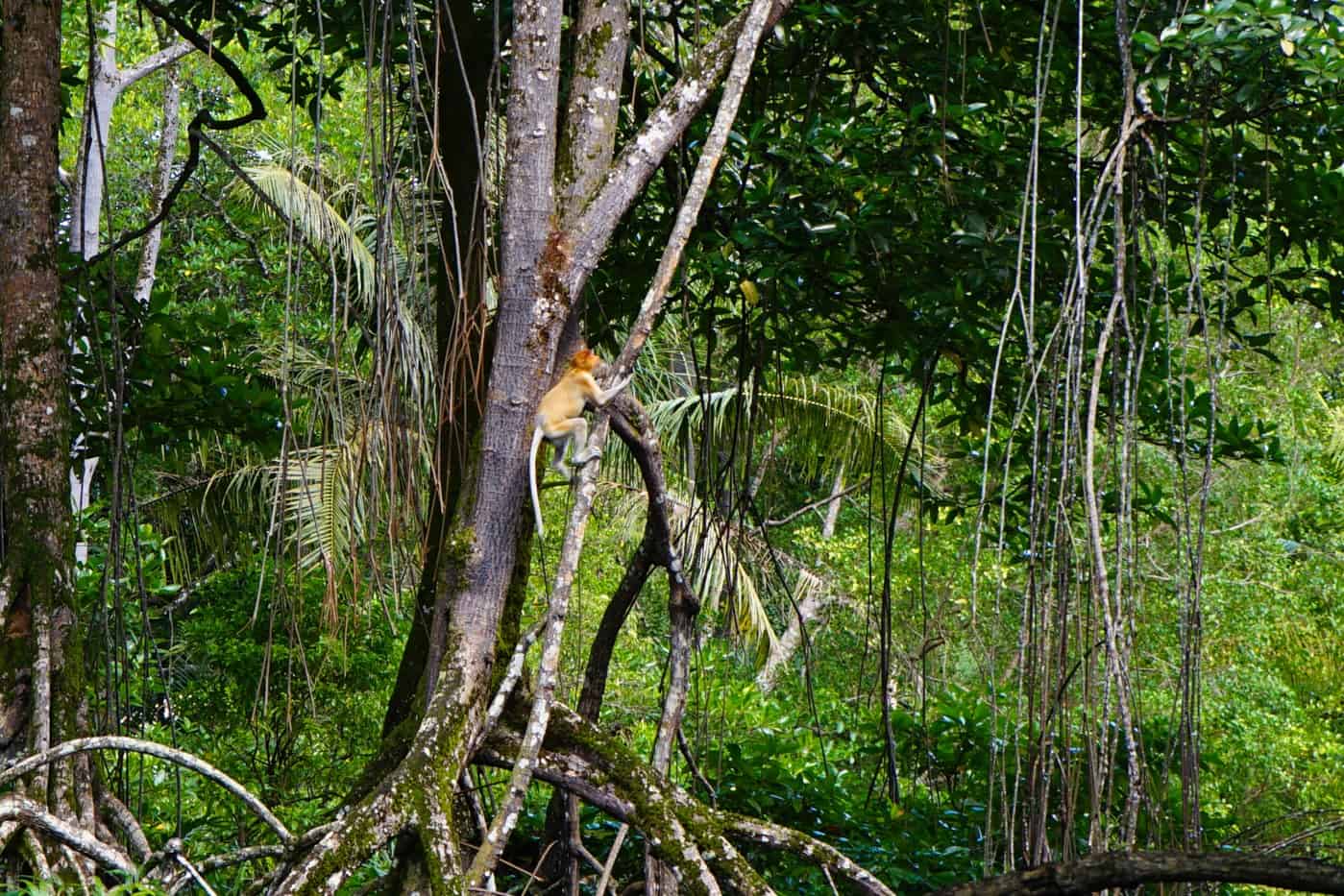
“You need a zoom lens,” our driver said, as though he could read my mind.
“Yup,” I said, frowning as I squinted at my photos.
I wasn’t too concerned, though. We were planning to travel into Malaysian Borneo after our time in Brunei and I’d read that animal encounters were far more frequent and exciting in Sabah.
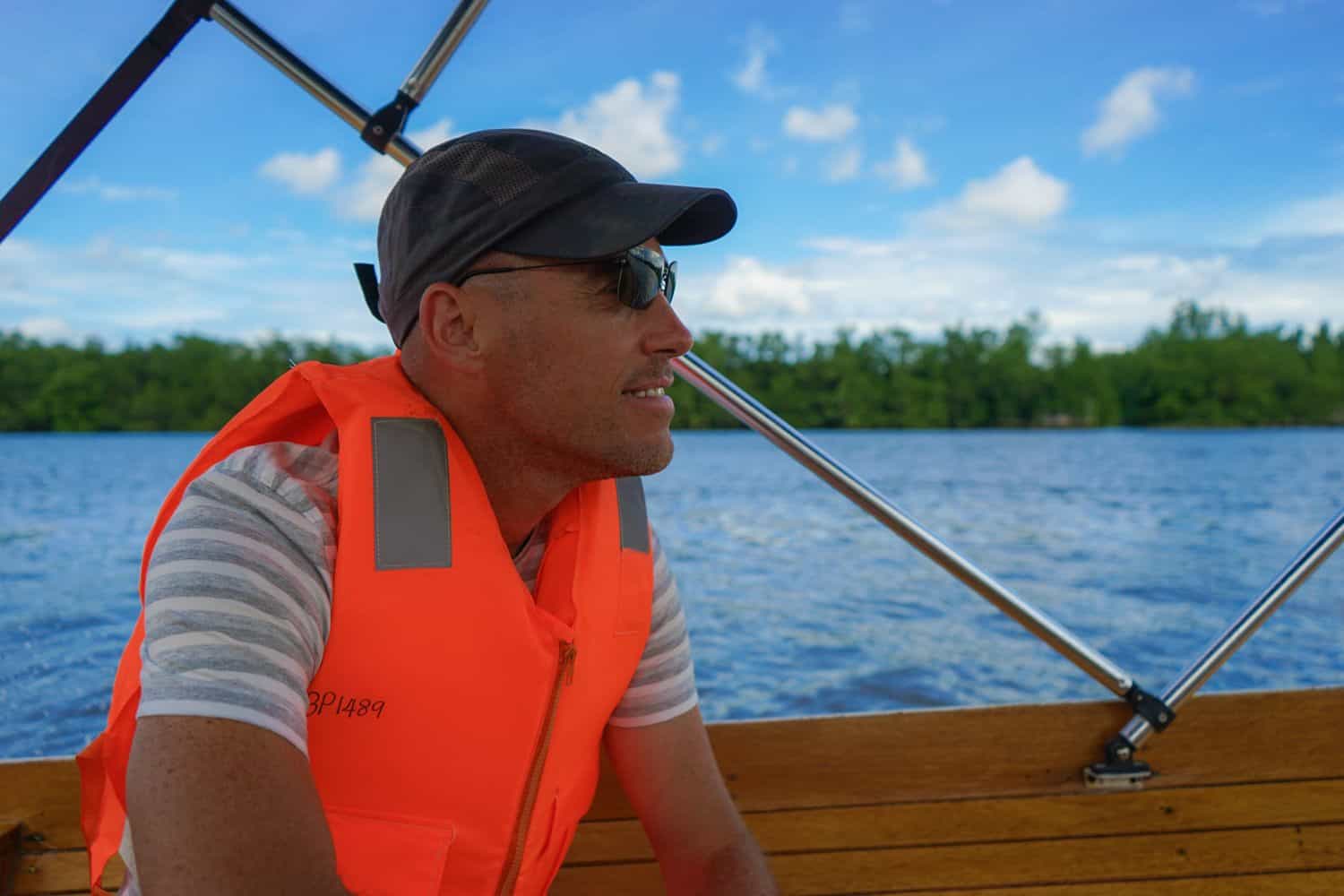
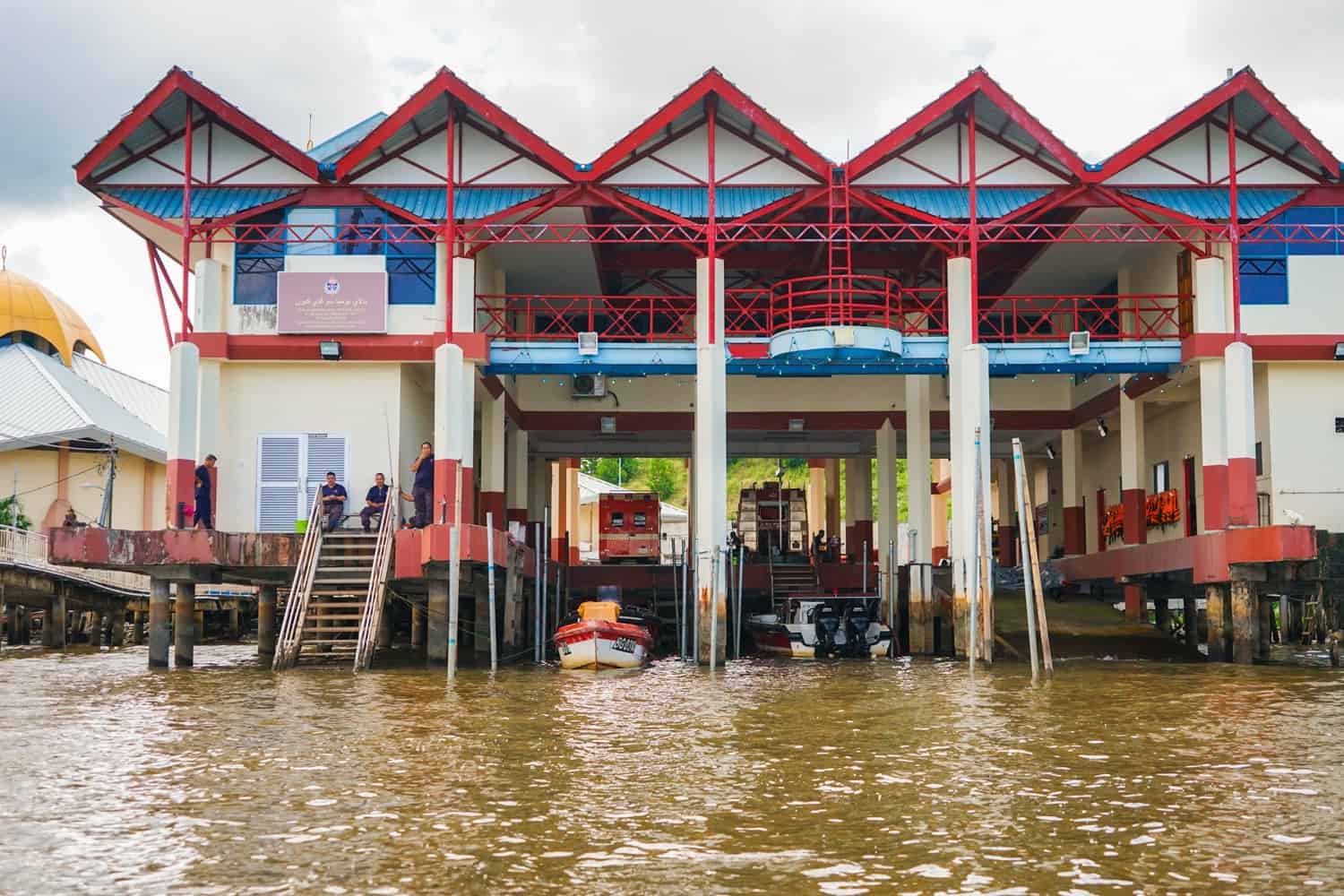
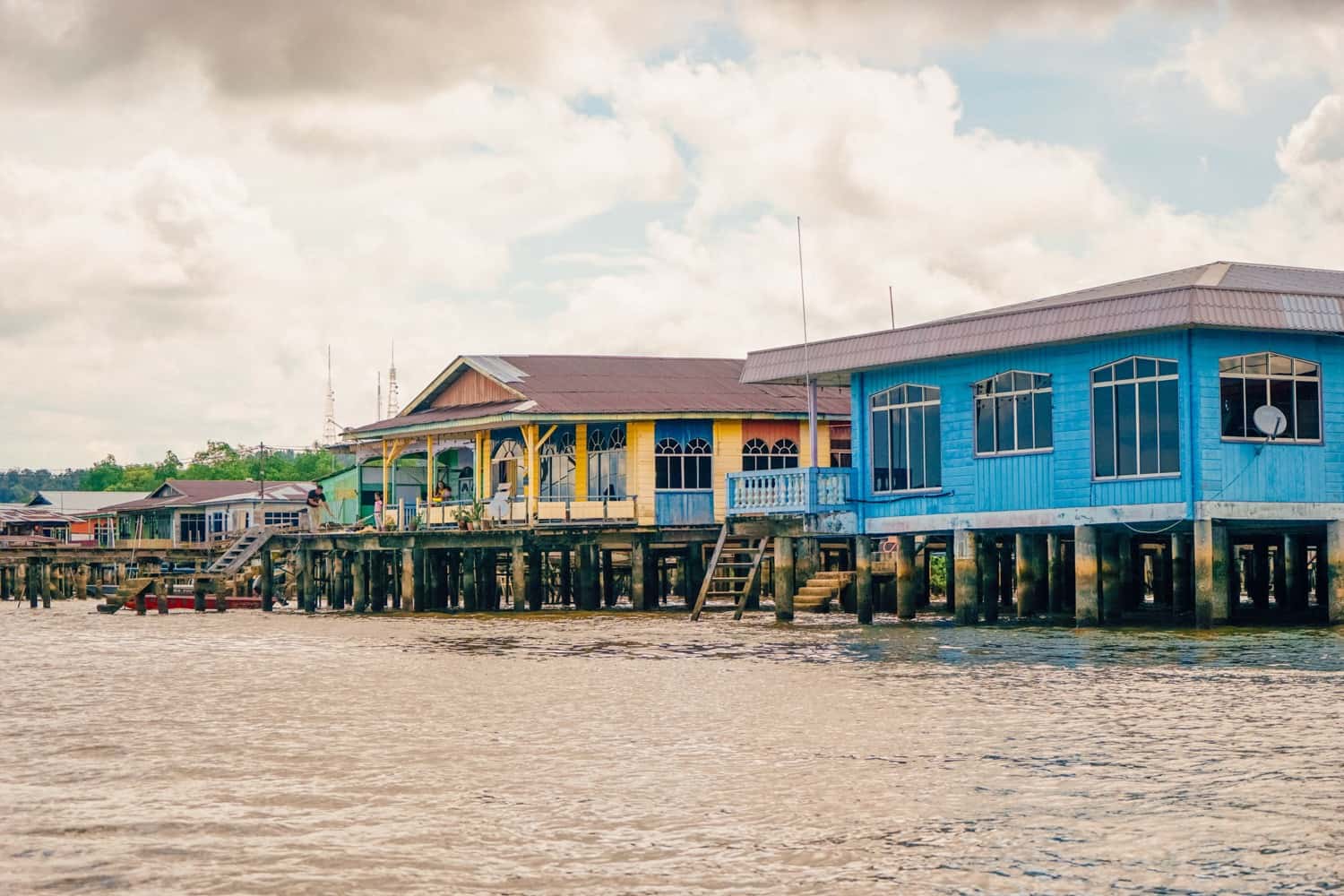
I asked our driver if he’d mind showing us around Kampong Ayer.
He’d grown up on this group of floating villages, so was able to tell us about his life on the water, pointing out the school-on-stilts that he used to attend, as well as the local police and fire stations — all of them on stilts above the river. While most people think of Kampong Ayer as a single village, it actually encompasses 42 villages on the water, stretching out for 23 miles.
This part of Brunei is over 1,000 years old and is home to a dwindling population of around 13,000. Within the villages, you’ll find 13 schools, an art gallery, a mosque, post offices, petrol stations, and even a prison. If you look on Booking, you’ll find half a dozen private rooms you can rent out in order to gain a taste of this traditional Bruneian life.
If you’re anything like me, you probably hold the misconception that these homes are primitive in nature, but residents on the water have access to electricity, air conditioning, running water, TVs, and the internet. Some of Bandar Seri Begawan’s wealthy residents choose to live on the water, and you’ll see their luxury cars parked up on the banks beside the river. And yet, Kampong Ayer is also home to a population of undocumented immigrants and poverty is rife. Just like any other city.
You can walk along the boardwalks that connect the villages to gain a closer look at the locals’ existence, but I was content to observe from afar. I’m always hyper-conscious of intruding into the lives of locals — I know I’d hate having groups of tourists peering into my windows all day long — so always keep my distance in these situations.
We paid our driver for our 90 minutes on the river, and received a text from Maya as we clambered out of the boat. She had finished her yoga class and wondered if we wanted to grab lunch with her.
Obviously, we did.
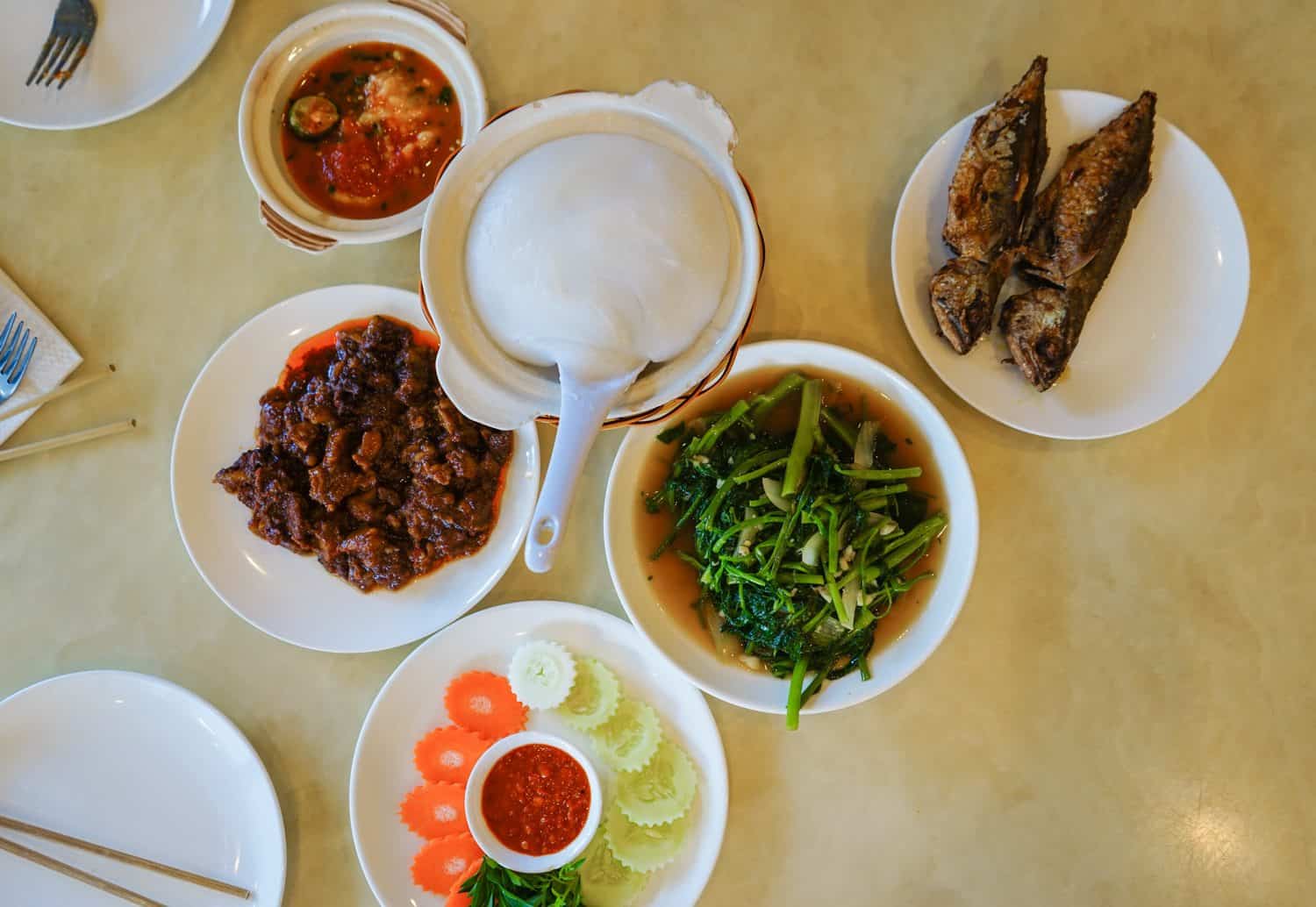
I can’t fully express how much richer Maya made our time in Brunei. Without her, we would have experienced greater challenges in a city with limited public transport, and wouldn’t have been able to explore as much of the country’s food scene.
She picked us up and told us she was going to drive us to one of her favourite restaurants. On the way, we discovered that her daughter is currently studying at the same university that I went to! My university was known for having one of the highest percentage of international students in the U.K., and many Bruneians choose to study in the U.K. on a full scholarship, but it still felt like a bizarre coincidence.
We pulled up outside Aminah Arif, and Maya told us she was going to introduce us to ambuyat: the national dish of Brunei.
Ambuyat is a bit of an odd meal, which was exactly why I had been so desperate to try it.
It’s made from the interior of a sago palm, and is completely tasteless. Its texture is gooey, gluey, and gloopy, and it’s eaten with a special type of fork called candas. These forks are made from two bamboo sticks that are glued together at one end and splay out to give a gap of around an inch at the other.
I have a feeling I’m not explaining this well. Here’s a photo of Dave using them.
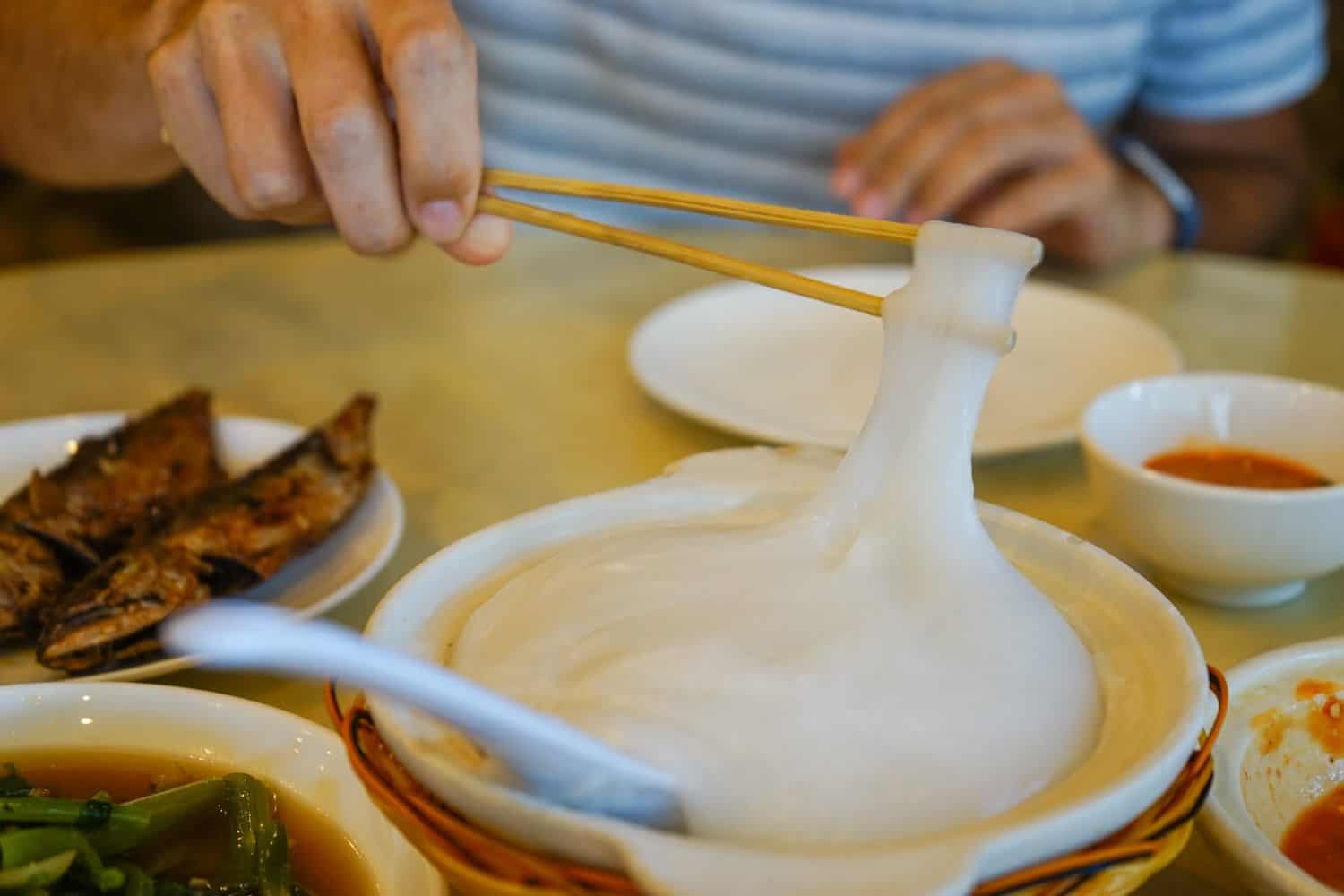
Because ambuyat has zero flavour whatsoever, it’s a boring-ass dish to eat on its own. That’s why you order a ton of dips and dishes to accompany it! We chose a fantastic sauce that was made from fermented shrimp, durian, and chilli, and it gave each mouthful an incredible spicy, sweet, and sour flavour.
To eat ambuyat, you stick your chandas into the starch and start spinning the fork in your fingers, as you would with spaghetti. Once you’ve got a mouth-sized ball on the end of your fork, flick the chandas upwards, dip the ambuyat into the sauce, then place it in your mouth. Because ambuyat has such a glue-like texture, you need to swallow the ball immediately, totally whole, as chewing achieves nothing — trust me, I tried.
We spent three hours chatting with Maya as we sampled everything, then protesting when she told us this was her treat and refused to accept our money.
Maya: totally the best.
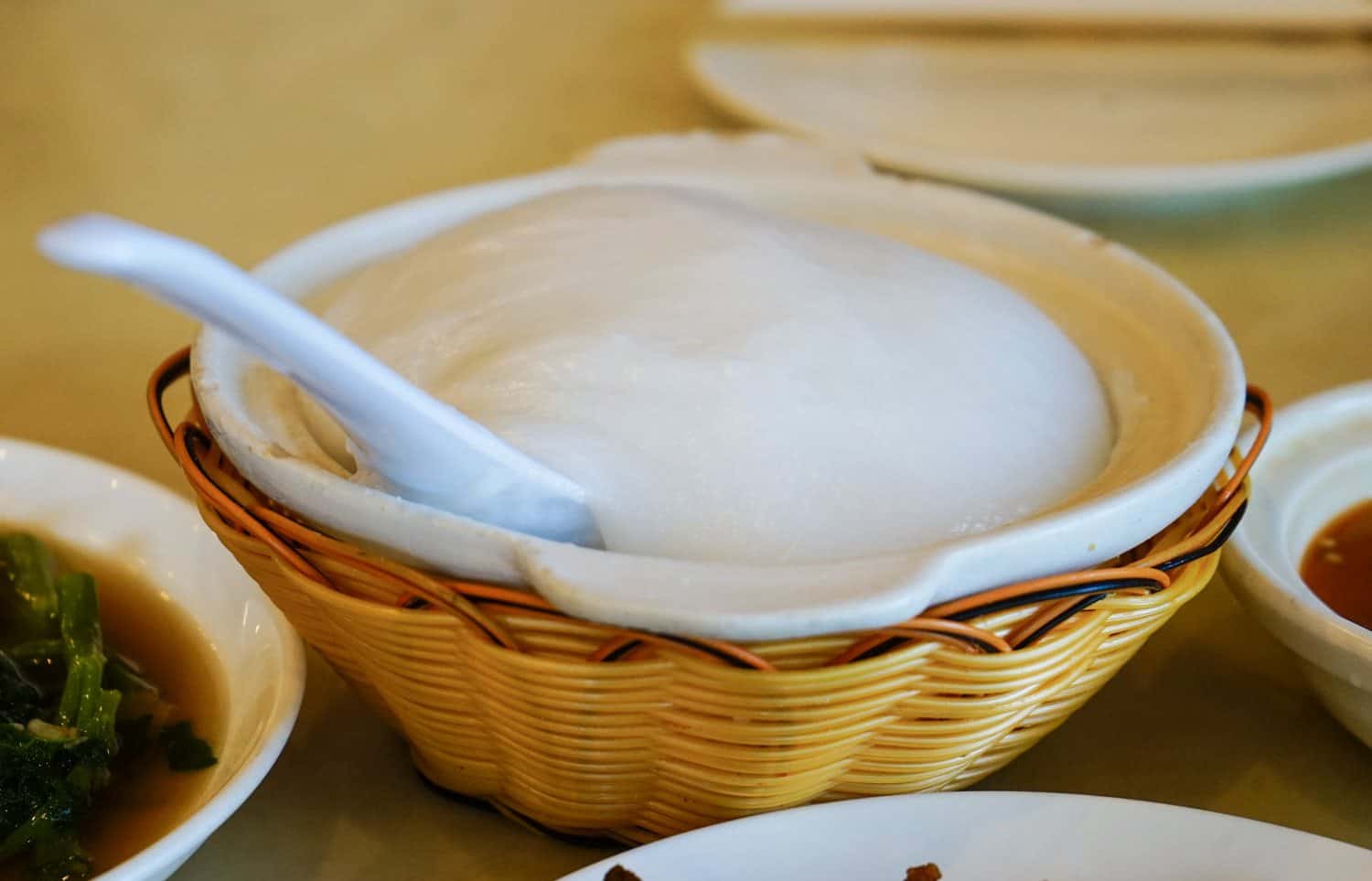
With our stomachs full, we returned to our guesthouse and pondered what to do next. We had the rest of the afternoon to explore, as well as the following day, and I realised we’d exhausted all of the touristy things to do in the country.
As in, there was nothing left to do.
Well, I mean, there were things.
I could have done the canopy walk at Ulu Temburong National Park for a ridiculous $112, but everything I’d read said that the jungle was more impressive and less expensive to see in non-Bruneian Borneo, where I was going to be heading to next. I’d be spending money just for the sake of having something to do.
I could have gone SCUBA diving, too, but long-term readers already know I’ll spend the rest of my life writing about how I want to try it, but never actually having the courage to do so.
The rest of our time in Brunei could therefore be classified as boring as hell and we couldn’t wait to leave. For a capital city, Bandar Seri Begawan appeared to have next-to-nothing going on.
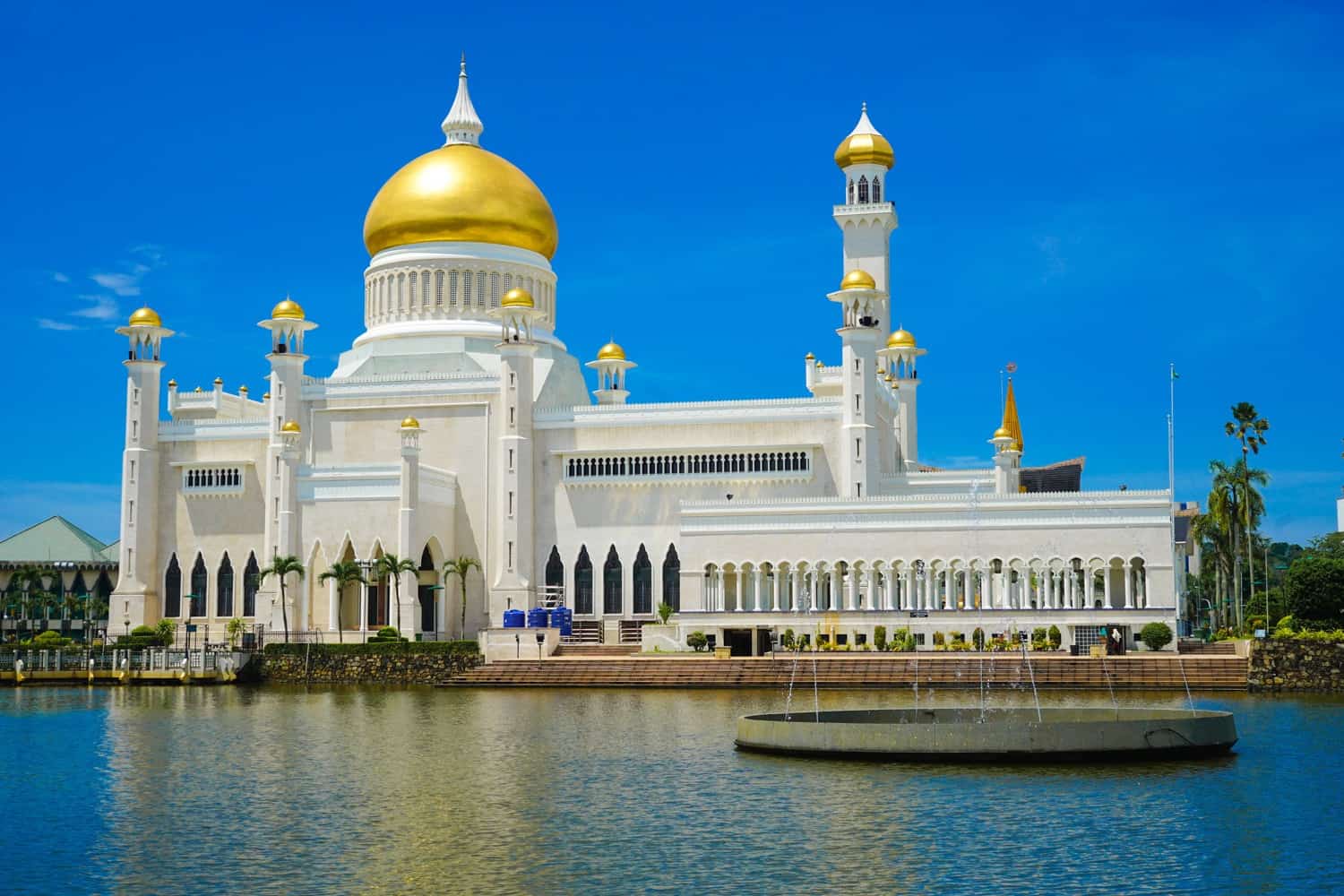
So, is Brunei Worth Visiting?
Brunei is the only country I have little desire or need to return to. I don’t feel as though there’s more left to discover as a visitor, and it’s the only country where I felt I’d experienced almost every tourist-related activity within 48 hours.
Does that mean you shouldn’t go?
Not necessarily.
I genuinely enjoyed wandering around Omar Ali Saifuddien Mosque, loved trying ambuyat and experiencing Bruneian night market culture, and was fascinated by the way of life in Kampong Ayer. They were all worthwhile experiences, and I would recommend them to anyone planning a trip there. I also experienced such an extreme level of kindness and friendliness from the locals that it really stood out to me. I felt welcomed and safe.
Despite that, you can do the majority of the tourist activities within 24 hours. All of them within a couple of days.
The contrarian in me is livid that I’m about to offer the exact same recommendation as I’d read before arriving in Brunei.
You should visit Brunei if you want to visit every country in the world. You should visit Brunei if you find yourself passing through on a layover or when travelling in Borneo. You should visit Brunei if you want to see what one of the least visited countries in Asia is like. You should visit Brunei if it sounds interesting to you.
But, uh, you probably shouldn’t spend more than a couple of days there.
It turns out it does get pretty boring after all.
Comments
Post a Comment